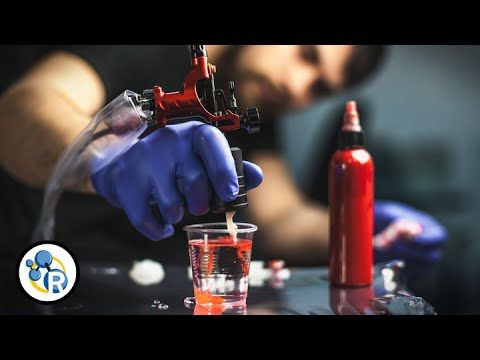The Chemistry Of Tattoos: Macrophage Cells Close Needle Punctures To Make Tattoo Permanent

The decision to get a tattoo is one that follows us for the rest of our lives. For better or for worse, it is permanently inked onto our skin representing either our identity, personal interests, or affiliations. But what is it that makes tattoos permanent?
In the latest video frpm the American Chemical Society's "Reactions" series, Rachel Feltman from The Washington Post explains what's happening at a cellular level when we get inked. “The tattoo needles are puncturing my skin at about 50 to 3,000 times a minute," she says as she gets a tattoo.
The needle punctures through the epidermis — the outside layer of the skin — and enters the layer beneath, known as the dermis. Here, capillaries take the ink down from holes in the epidermis. The tattoo becomes permanent when the immune system tries to save the body from all the wounds caused by the needle.
Every time the needle makes a hole, macrophage cells try to close the wound — the ink is a foreign invader and these cells will try to swallow it up and destroy it. Instead, the macrophage cells, full of ink get stuck in what is described as a “gel-like matrix” of the dermis. They remain there for the rest of our lives and that is what makes tattoos permanent.
Tattoos look so vibrant when we first get them because the outside layer of skin is still full of ink from the needles. However, after the skin has finished healing, it will shed the outside layer, which is why tattoos fade after a few days. Over time, tattoos slowly fade as the body's immune system slowly breaks down the pigmented particles.
For the most part, the ink will remain in the dermis, which is why tattoos are permanent.



























